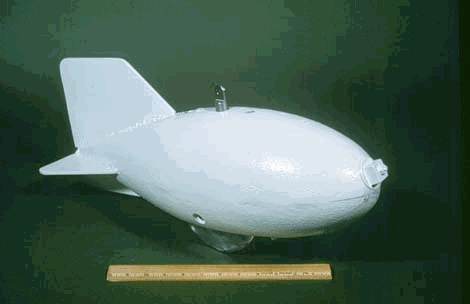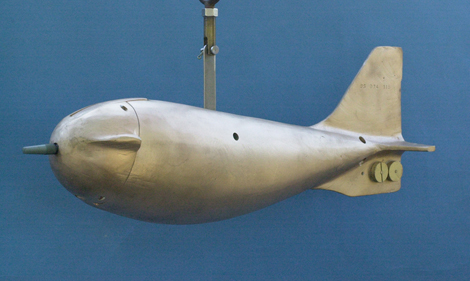|
OPEN-CHANNEL HYDRAULICS: LECTURE 116 - SEDIMENT MEASUREMENTS
1. SEDIMENT MEASUREMENTS 1.01 Measurements of fluvial sediments are often necessary to complement sediment transport and sediment yield studies. 1.02 The accuracy of the measurement is dependent not only on the equipment and techniques used, but also on the application of basic principles of sediment transport. 1.03 As sediment enters a stream or river, it separates into bed material load and wash load. 1.04 In turn, the bed material load is transported as either (a) bed load or (b) suspended bed material load. 1.05 The sum of suspended bed material load and wash load constitutes the suspended load of the stream or river.
1.06 The term sampled suspended load is used to describe the fraction of suspended load that is possible to sample with available equipment. 1.07 It excludes the unsampled suspended load, that is, the fraction of suspended load that is carried too close to the streambed to be effectively sampled. 1.08 The sum of sampled and unsampled suspended loads is the total suspended load. 1.09 Since 1939, sediment sampling equipment has been developed and supported by the U.S. Federal Interagency Sedimentation Project. 1.09 Sediment sampling equipment is of three types: 1. Suspended sediment samplers 2. Bed material samplers. 3. Bedload samplers
2. SUSPENDED SEDIMENT SAMPLERS 2.01 Suspended sediment samplers are of two types: 1. Depth-integrating 2. Point-integrating 2.02 Depth-integrating samplers accumulate a water-sediment sample in a pint-size bottle as the sampler is lowered to the streambed and raised back at a uniform rate of transit. 2.03 These samplers are designed to assure that the velocity in the intake nozzle is nearly equal to the local stream velocity. 2.04 Samples may be collected by wading in a stream, by hand from a suitable support, or mechanically with a cable-and-reel setup. Fig. 10
2.05 The U.S. DH-48 sampler is a depth-integrating suspended sediment sampler, sufficiently lightweight for use with wading rod suspension. 2.06 It is recommended for use in shallow streams where the product of flow depth, in feet, and mean velocity, in feet per second, does not exceed 10. 2.07 The sampler weights 3.5 lbs, and can sample to within 3.5 in of the streambed. Fig. 01
2.08 The U.S. DH-59 and U.S. DH-76 are two depth-integrating suspended sediment samplers with handline suspension, designed for use in deeper streams where wading is not possible. The samplers weigh 22 and 25 lbs, respectively. Fig. 02
Fig. 04
2.09 The U.S. D-74 is a depth-integrating suspended sediment sampler with cable-and-reel suspension, for use in streams where flow conditions do not permit the use of hand-operated equipment. This sampler weighs 62 lbs. 2.10 Point-integrating suspended sediment samplers measure a sample at any point in the stream vertical. 2.11 These samplers can also be used take a depth-integrated sample over a range of depths. 2.12 Point-integrating samplers are used to collect suspended sediment samples in streams that are too deep to be appropriately sampled with a depth-integrating sampler. 2.13 The U.S. P-61-A1, U.S. P-63, and U.S. P-72 point-integrating samplers are in current use.
3. BED MATERIAL SAMPLERS 3.01 Bed material samplers are of three types: 1. U.S. BHM-53 2. U.S. BHM-60, and 3. U.S. BM-54. 3.02 The U.S. BMH-53 piston-type bed material hand sampler is used to collect a sample of material from the bed of a shallow stream that may be waded. 3.03 The overall length of the sampler is 46 inches. The lower end contains a cylinder 2 inches in diameter and 8 inches long, that is pressed into the streambed to collect the sample. 3.04 The suction created by the piston holds the sample in the cylinder. 3.05 This sampler will not work for coarse sands and gravels. Its weight is 7.5 lbs. Fig. 05
3.06 The U.S. BMH-60 is a bed material sampler with handline suspension, used to collect samples from the bed of a stream, lake, or reservoir. 3.07 Penetration into the bed material is about 1.7 inches. 3.08 The sampler can be suspended from a flexible line and lowered and raised by hand power. 3.09 This sampler weighs 32 lbs. 3.10 The weight of the sampler limits its use to low-velocity streams and slightly or moderately compacted bed materials. Fig. 07
3.11 The U.S. BM-54 bed material sampler, with cable suspension, is used to collect samples from the bed of a stream of any depth. 3.12 The sample is collected from the top 2 inches of the streambed, in a single scoop-type bucket that pivots out of the bottom of the sampler body. 3.13 The bucket encloses the sample in such a way that it is not washed out when the sampler is raised to the water surface. 3.14 This sampler weights 100 lbs. Fig. 06
4. BEDLOAD SAMPLERS 4.01 There are two types of bedload samplers: 1. U.S. BLH-84, and 2. U.S. BL-84 4.02 The U.S. BLH-84 is a wading type bedload sampler, used to collect bedload samples from a stream that can be waded. 4.03 This sampler can collect bedload of particle sizes less than 38 mm at mean velocities up to 9.8 feet per second. The sampler weighs 10 lbs. Fig. 08
4.04 The U.S. BL-84 is a cable-suspended bedload sampler, used to collect bedload samples from a stream of any depth. 4.05 This sampler must be supported by a steel cable-and-reel suspension system. The sampler weighs 32 lbs. Fig. 09
4.06 This table shows a comparison of sediment samplers.
5. SEDIMENT DISCHARGE MEASUREMENTS 5.01 Suspended sediment samplers determine sediment concentration at a cross section in a stream. 5.02 With wading equipment, measurements can be made down to within 0.3 ft of the streambed. 5.03 With cable-supported equipment, the unmeasured zone varies between 0.5 and 1 ft, depending on the type of sampler used. 5.04 Suspended load measurements consist of: 1. Sediment concentration 2. Particle size 3. Specific gravity 4. Temperature of water-sediment mixture 5. Water discharge, and 6. Distribution of flow in the stream cross section.
5.05 The streamflow depth and velocity and the available facilities at the sampling site determine the choice of sampler. 5.06 Stream depth determines whether hand-operated samplers or cable-suspended samplers should be used. 5.07 Flow depths over 15 ft require the use of point-integrating samplers to avoid overfilling of the sampler bottle. 5.08 The larger the product of depth times velocity, the heavier the sampler required for proper measurement. 5.09 In U.S. Customary units, suspended sediment discharge is calculated by this formula:
Eq. 1
5.10 in which Qs is the suspended sediment discharge in tons per day Cs is the suspended sediment concentration in milligrams per liter Q is the water discharge in cubic feet per second. 5.11 In SI units, the suspended sediment discharge is:
Eq. 2
5.12 in which Qs is the suspended sediment discharge in kilonewtons per day Cs is the suspended sediment concentration in milligrams per liter Q is the water discharge in cubic meters per second. 5.13 The error in suspended load provided by the measurement varies with the depth of the unsampled zone and the size distribution of suspended load. 5.14 The error tends to be larger where the vertical concentration gradient in the unsampled zone is large, that is, for the coarse sand sizes. 5.15 Corrections to account for the unmeasured sediment load can be obtained with methods such as the Modified Einstein Procedure. Fig. 01
Fig. 02
Fig. 03
Fig. 04
Fig. 05
Fig. 06
Fig. 07
Fig. 08
Fig. 09
Fig. 10
Narrator: Victor M. Ponce Music: Fernando Oñate Editor: Flor Pérez
Copyright © 2011 Visualab Productions All rights reserved
| |||||||||||||||||||||||||||||||||||||||||||||||||









